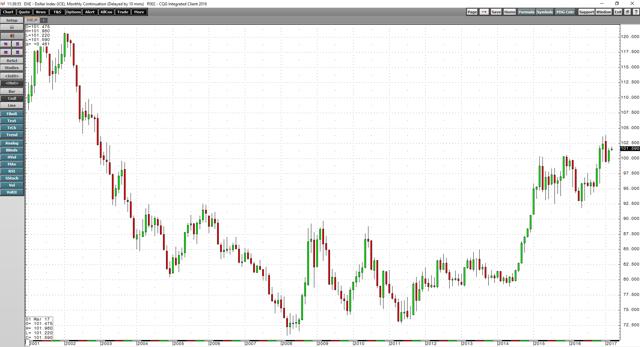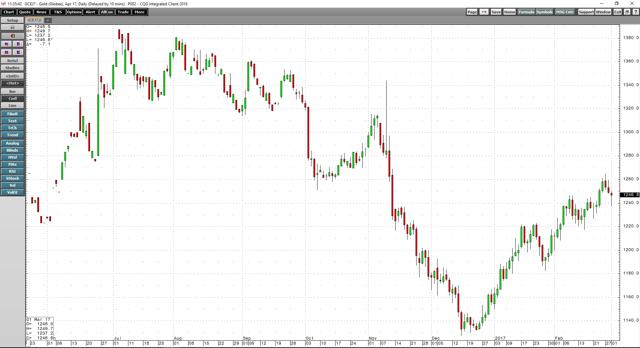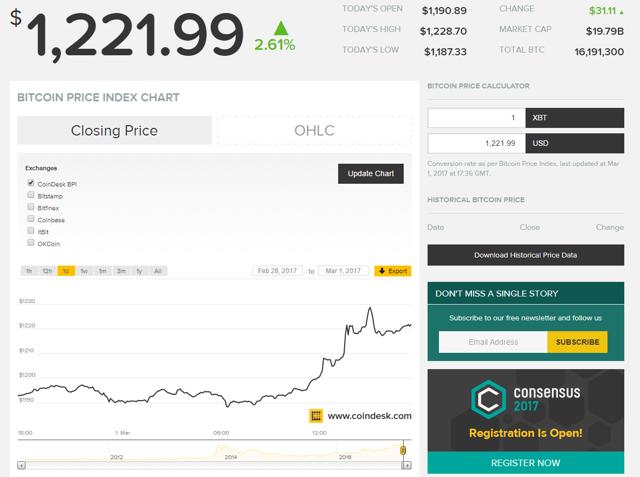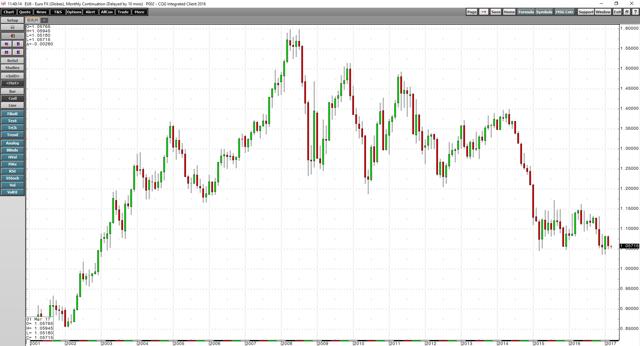This week, gold rose to a new short-term high and Bitcoin to a new all-time price peak. Gold is traditionally a safe-haven asset. In times of uncertainty and fear, gold tends to outperform other assets. Gold is also a traditional hedge against inflation that eats away at the value of many assets. Gold metal has a long history as a commodity and a means of exchange, a currency.
Over the course of history, gold has been around a lot longer than all of the currencies now traded in the foreign exchange market around the world. Gold is a commodity, and in the United States the Commodities Futures Trading Commission (CFTC) regulates the largest and most respected gold futures market in the world, the COMEX division of the Chicago Mercantile Exchange.
Meanwhile, Bitcoin is a cryptocurrency that is new on the financial scene. The Commodities Futures Trading Commission has defined Bitcoin as a commodity but it is much more than that. Bitcoin is a pan-global currency. Central banks, monetary authorities, or supranational financial institutions around the world do not control Bitcoin in any way, shape, or form.
So far in 2017, the prices of both gold and Bitcoin are moving higher. The bullish price action in these two assets could be telling us a lot about the value of paper money these days as well as the future for the status quo of foreign exchange markets.
Gold takes off in December, again
After a sharp and painful correction that took gold from over $1345 on November 9 to lows of $1127.20 on the active month COMEX April futures contract on December 15, the yellow metal shifted back into bullish mode.
As the daily chart highlights, gold took off to the upside again after making lows in the middle of December and traded to a high of $1264.90 on Monday, February 27. The next level of technical resistance for the yellow metal is above $1300 per ounce. Gold has moved higher as fear and uncertainty in markets has caused a flight to quality assets and gold has a long history as a safe haven for investors.
The all-time nominal high for the price of gold came back in September 2011 when it traded to $1920.70. Gold has been making a statement about the faith in paper currencies since it initially rallied from the $1046.20 level in December 2015 and the trajectory of price is, in many ways, a commentary on faith in currencies and other asset prices these days. While gold has been shinning, another alternative currency has blown the roof off and traded to a new all-time high this week.
Bitcoin moves to a new all-time high
The price action in Bitcoin has been more bullish than in gold.
Source: CoinDesk
On March 1, the cryptocurrency traded to its highest level in history when the price hit over $1225 against the U.S. dollar, and by the time you read this piece, it is possible that Bitcoin is even higher.
The price action in both gold and Bitcoin has been bullish in 2017, which I interpret as an important event for the future value of world foreign exchange markets.
Paper currencies are losing value – backed by nothing but goodwill
Paper currencies around the world have the backing of the full faith and credit of the governments that print the dollars, euros, yen, Swiss francs, pound sterling, RMB, and many other world foreign exchange instruments. Gold and Bitcoin have appreciated against all of these currencies so far in 2017.
There are virtually no countries in the world today that back their monetary units with gold, silver or any other hard asset. While central banks, monetary authorities, and supranational financial institutions continue to hold gold as part of their foreign exchange reserves, the days of a gold standard ended decades ago.
The global financial crisis of 2008 and slowdown in Chinese economic growth over recent years has caused a tremendous amount of volatility in markets across all asset classes. Central banks have used monetary tools such as low short-term interest rates and quantitative easing to stimulate economic conditions. While many of these tools have avoided financial disaster by encouraging spending and borrowing and inhibiting savings, the trend in monetary policy and effects of massive liquidity has diluted the value of currencies to a point where faith in central banks and governments has been on the decline.
The value of a currency is a reflection of both economic and political conditions within the nation that prints legal tender. In China, a devaluation of the RMB has led many within the nation who have seen their wealth grow over recent years to seek more stable vehicles to preserve the value of their savings.
In Europe, Japan, and many other nations around the world, economic conditions remain lethargic. Only in the United States has the economy seen a turn of events with unemployment declining and GDP starting to show signs of growth. However, the new administration in the U.S. does not wish to see a runaway dollar when it comes to value against other currencies.
The administration wants the dollar lower
In 2014, the U.S. central bank began tapering off its quantitative easing program, and in late 2015, the short-term Fed Funds rate rose above zero for the first time since the financial crisis of 2008. 
Source: CQG
As the monthly chart of the U.S. dollar index illustrates, the greenback took off against other world currencies in 2014 and rose from 79.83 to 100.38 in only ten short months. The over 27% appreciation of the dollar caused hardship for multinational U.S. companies, which found their products less competitive on world markets as a result of the rally in the dollar.
The dollar index stabilized and traded in a range from 92-100.60 during a twenty-month consolidation period that following the ten-month rally. However, after the election of Donald Trump as the forty-fifth President of the United States, the U.S. currency broke above technical resistance on the upside and rallied to the highest level since 2002 when it traded at 103.815 at the beginning of January 2017.
In the past, administrations in the United States followed a strong dollar policy. However, there are signs that the Trump Administration under Treasury Secretary Steve Mnuchin will not be advocates for a strong dollar at this time. Additionally, when the U.S. Federal Reserve released their monthly minutes of the latest FOMC meeting last week, one of the biggest concerns voiced by members of the body that determines short-term interest rates was that a strong dollar could weigh on economic growth.
The bottom line is that the dollar is strong against virtually all other currency instruments but the administration and central bank do not want to see the dollar continue to rise to new heights versus the world’s other major currency instruments. Therefore, it is probable that the rallies in gold and Bitcoin are a reflection of a world where all paper currencies are losing value.
So many issues on the horizon favor both Bitcoin and gold
Currencies are a reflection of politics and economics. It was the financial crisis of 2008, an economic event that caused central banks to add liquidity to markets to avoid recessions or worse around the globe. However, today it seems that political forces have taken over and weigh on the value of monies printed by the governments of the world.
In China, the devaluation of the yuan and the non-convertibility of the currency for many Chinese, has led to an increase in the demand for pan-global monetary instruments like gold and Bitcoin. The rest of Asia depends on China, the world’s second richest nation, for economic growth and stability. Therefore, the Chinese economic slowdown and currency devaluation could be leading other Asian citizens to safe haven and pan-global monetary instruments. In Japan, short-term interest rates at negative forty basis points make the yen a less than attractive currency to hold.
In Europe, the Brexit vote last June was likely the first shoe to drop on the political front. With the United Kingdom leaving the European Union, the economic might of Europe suffered a blow. In 2017, three other major E.U. member nations will go to the polls to elect leaders for the coming years. In the U.K., many voted to exit the E.U. because of immigration policies made in Brussels. These policies are not popular with many in other member nations and it is possible that the other member nations will also go rogue and decide to elect candidates that are not supportive of E.U. policy.
The first election will take place in March when citizens of the Netherlands go to the polls to elect a Prime Minister. A populist candidate is currently close to the top of the polls. In April, France will elect their next leader and Marine Le Pen, a far-right, anti-immigration, and anti-E.U. candidate is also receiving a lot of support in the polls leading up to the election. Later in this year, Germans will go to the voting booth to either give Chancellor Andrea Merkel another term or replace her with another candidate.
Germany is the largest and most influential economy in Europe. The Brexit vote in the United Kingdom started a nationalistic trend in Europe and if these three nations decide to reject the status quo in the months ahead, it will have dire ramifications for the future of the European Union and the euro currency.
Source: CQG
As the monthly chart of the euro currency highlights, the currency has declined from around the $1.40 level against the dollar in May 2014 to under $1.06, the lowest level since 2003. A rejection of the current leadership and those who favor the Union over a nationalistic solution will likely cause the euro currency to weaken further in the months ahead. Like in Japan, the short-term yield on the euro is at negative forty basis points and the European Central Bank continues to follow a course of quantitative easing making the euro currency a less than attractive instrument to hold.
The election of Donald Trump as the forty-fifth President of the U.S. was yet another blow to the trend towards globalism in the world. President Trump has pledged to “put America first” when it comes to relations with the rest of the world. The new administration ran on a platform that was against many multilateral trade agreements negotiated by former administrations. President Trump has told the world that trade agreements will be on a bilateral basis going forward.
He also told the rest of the world that protection comes at a price and that other allied nations around the world will need to start contributing their fair share as America has been shouldering the financial burden of keeping the world safe causing the nation’s deficit to grow to over $20 trillion. A dramatic change in U.S. relations with the rest of the world is yet another reason for uncertainty and fear when it comes to the future of financial markets.
Gold and Bitcoin are moving higher so far in 2017 and the value of paper currencies are in question as citizens across many nations are going to the polls and expressing dissatisfaction with the status quo. It is interesting that a move away from globalism towards nationalistic candidates in the political world is causing gold and Bitcoin to appreciate. After all, in many ways, gold and Bitcoin are pan-global currency instruments that attract safe haven buying.
For centuries, gold has been not only a store of value, it has been an instrument used when the political climate creates the need for flight capital. When it comes to Bitcoin, the cryptocurrency is a means for people all over the world to avoid the manipulation and restrictions placed on money by central banks and governments so they can money wealth and savings around the globe. Many around the world are rejecting the politics of globalism in exchange for nationalism.
The world has become a smaller place because of advances in technology. The strength in gold and Bitcoin is telling us that many embrace a global view towards economics and that their money and wealth should not be under control of the governments and central banks in power. It will be interesting to see if global wealth and free flowing money that travels under the radar of governments can coexist with nationalistic political policies around the world and if the governments can do anything about the increasing popularity of these assets.
The Chinese have a saying that goes something like this, “May you live in interesting times.” It will be interesting to see if the trend that started in 2016 with the Brexit vote and Presidential election in the United States continues in Europe and around the globe in 2017. Right now, both gold and Bitcoin are saying that the trend is firmly in place.
I have introduced a new weekly service through Seeking Alpha Marketplace. Each Wednesday, I will provide subscribers with a detailed report on the major commodity sectors covering over 30 individual commodity markets, most of which trade on U.S. futures markets. The report will give an up, down or neutral call on these markets for the coming week and will outline the technical and fundamental state of each market.
At times, I will make recommendations for risk positions in the ETF and ETN markets as well as in commodity equities and related options. You can sign up for The Hecht Commodity Report on the Seeking Alpha Marketplace page. Additionally, check out my website for more information about commodities.
Disclosure: I/we have no positions in any stocks mentioned, and no plans to initiate any positions within the next 72 hours.
I wrote this article myself, and it expresses my own opinions. I am not receiving compensation for it (other than from Seeking Alpha). I have no business relationship with any company whose stock is mentioned in this article.

TheBitcoinNews.com – Bitcoin News source since June 2011 –
Virtual currency is not legal tender, is not backed by the government, and accounts and value balances are not subject to consumer protections. TheBitcoinNews.com holds several Cryptocurrencies, and this information does NOT constitute investment advice or an offer to invest.
Everything on this website can be seen as Advertisment and most comes from Press Releases, TheBitcoinNews.com is is not responsible for any of the content of or from external sites and feeds. Sponsored posts are always flagged as this, guest posts, guest articles and PRs are most time but NOT always flagged as this. Expert opinions and Price predictions are not supported by us and comes up from 3th part websites.
Advertise with us : Advertise
Our Social Networks: Facebook Instagram Pinterest Reddit Telegram Twitter Youtube














